Two issues, 1. you're using year variable in the plm formula which is redundant because it's already indexed, and 2. your Python PanelOLS code calculates individual fixed effects so far, I can replicate the Python estimates with plm using effect="individual".
library(plm)
fatalities_mod6 <- plm(fatal_rate ~ beertax + drinkage + punish + miles +
unemp + log(income), index=c("state", "year"),
model="within", effect="individual", data=Fatalities)
Furthermore Python's PanelOLS appears to use standard errors clustered on state applying the Arellano method using heteroscedasticity-consistent standard errors type 1 ("HC1").
round(summary(fatalities_mod6,
vcov=vcovHC.plm(fatalities_mod6, cluster="group", type="HC1",
method="arellano"))$coe, 4)
# Estimate Std. Error t-value Pr(>|t|)
# beertax -0.3664 0.2920 -1.2550 0.2105
# drinkage -0.0378 0.0252 -1.4969 0.1355
# punishyes -0.0342 0.0951 -0.3598 0.7193
# miles 0.0000 0.0000 -0.4217 0.6736
# unemp -0.0196 0.0128 -1.5385 0.1250
# log(income) 0.6765 0.5424 1.2472 0.2134
This resembles the PanelOLS result of Python.
Edit
For the two-way fixed effects estimator of your data with cluster-robust standard errors, the code would be,
for Python:
mod = PanelOLS(w1['fatal_rate'], w1[['beertax','drinkage','punish', 'miles' ,
'unemp','income']],
entity_effects=True, time_effects=True)
and for R:
fatalities_mod6 <- plm(fatal_rate ~ beertax + drinkage + punish + miles +
unemp + log(income), index=c("state", "year"),
model="within", effect="twoways", data=Fatalities)
summary(fatalities_mod6,
vcov=vcovHC.plm(fatalities_mod6, cluster="group", type="HC1"))
Edit 2
Here follow comparisons of Python, R, and Stata, conducted with the grunfeld data that come with statsmodels in Python (they're slightly different from the data(Grunfeld, package="plm")).
PanelOLS (Python), plm (R), and xtreg with vce(cluster *clustvar*) (Stata) appear to apply slightly different methods to calculate cluster-robust standard errors (see linked docs for details).
Python:
from statsmodels.datasets import grunfeld
data = grunfeld.load_pandas().data
data = data.set_index(['firm','year'])
import pandas as pd
data.to_csv("grunfeld.csv") ## export data for R / Stata
from linearmodels import PanelOLS
mod = PanelOLS.from_formula('invest ~ value + capital + EntityEffects + TimeEffects',
data=data)
print(mod.fit())
# Parameter Std. Err. T-stat P-value Lower CI Upper CI
# ------------------------------------------------------------------------------
# value 0.1167 0.0129 9.0219 0.0000 0.0912 0.1422
# capital 0.3514 0.0210 16.696 0.0000 0.3099 0.3930
print(mod.fit(cov_type='robust'))
# value 0.1167 0.0191 6.1087 0.0000 0.0790 0.1544
# capital 0.3514 0.0529 6.6472 0.0000 0.2471 0.4557
print(mod.fit(cov_type='clustered', cluster_entity=True))
# value 0.1167 0.0113 10.368 0.0000 0.0945 0.1389
# capital 0.3514 0.0470 7.4836 0.0000 0.2588 0.4441
print(mod.fit(cov_type='clustered', cluster_entity=True, cluster_time=True))
# value 0.1167 0.0117 10.015 0.0000 0.0937 0.1397
# capital 0.3514 0.0447 7.8622 0.0000 0.2633 0.4396
R:
grunfeld <- read.csv("V:/Python/fatalities/grunfeld.csv")
library(plm)
fit <- plm(invest ~ value + capital, grunfeld, effect="twoways", model="within",
index=c("firm", "year"))
## resembles exactly py mod.fit()
round(summary(fit)$coe, 4)
# Estimate Std. Error t-value Pr(>|t|)
# value 0.1167 0.0129 9.0219 0
# capital 0.3514 0.0210 16.6964 0
## resembles approximately py mod.fit('cluster', cluster_entity=True) and Stata (below)
round(summary(fit, cluster="group",
vcov=vcovHC.plm(fit, method="arellano", type="HC2")
)$coe, 4)
# Estimate Std. Error t-value Pr(>|t|)
# value 0.1167 0.0114 10.2042 0
# capital 0.3514 0.0507 6.9364 0
## doesn't seem to change with two-way clustering
round(summary(fit, cluster=c("group", "time"),
vcov=vcovHC.plm(fit, method="arellano", type="HC2")
)$coe, 4)
# Estimate Std. Error t-value Pr(>|t|)
# value 0.1167 0.0114 10.2042 0
# capital 0.3514 0.0507 6.9364 0
fit.1 <- lm(invest ~ value + capital + factor(firm) + factor(year) + 0, grunfeld)
library(lmtest)
## resembles exactly py mod.fit(cov_type='robust')
round(coeftest(fit.1, vcov.=sandwich::vcovHC(fit.1, type="HC1"))[1:2,], 4)
# Estimate Std. Error t value Pr(>|t|)
# value 0.1167 0.0191 6.1087 0
# capital 0.3514 0.0529 6.6472 0
Stata:
import delim grunfeld.csv, clear
egen firmn = group(firm)
xtset firmn year
xtreg invest value capital i.year, fe vce(cluster firmn)
# | Robust
# invest | Coef. Std. Err. t P>|t| [95% Conf. Interval]
# -------------+----------------------------------------------------------------
# value | .1166811 .0114755 10.17 0.000 .0911122 .1422501
# capital | .3514357 .0478837 7.34 0.000 .2447441 .4581273


